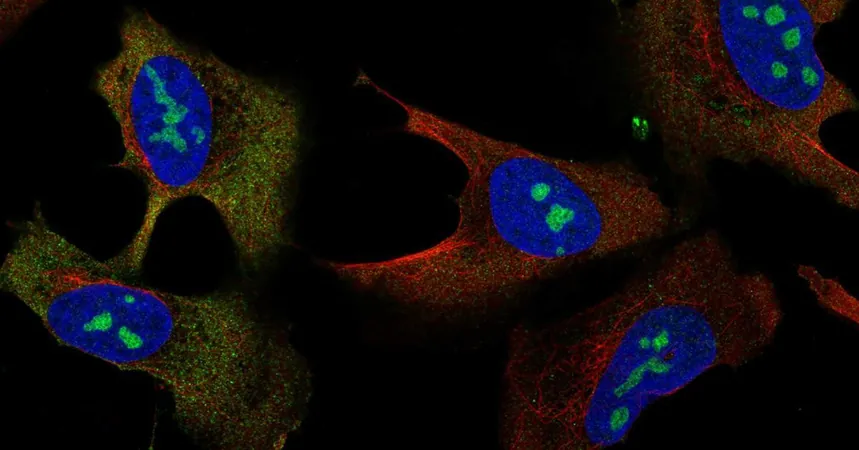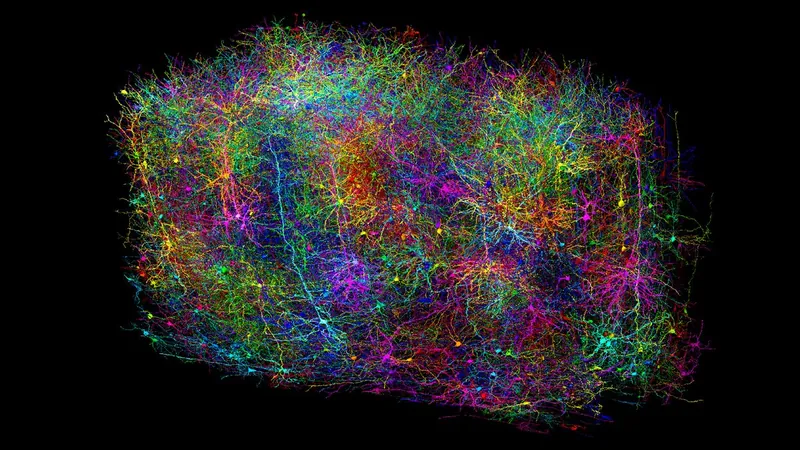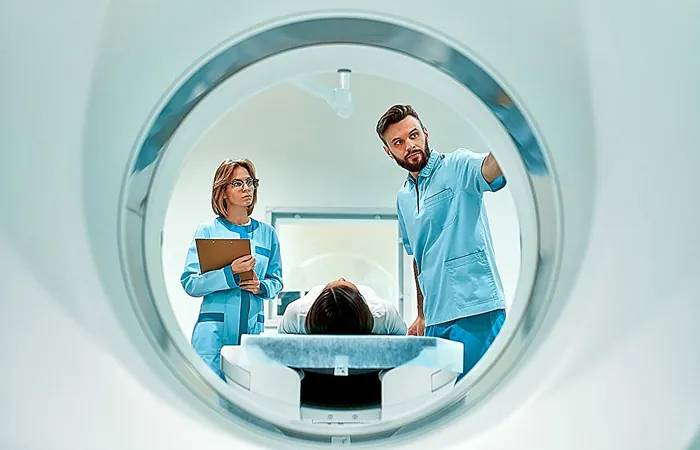
Revolutionary Human Cell Mapping Sheds Light on Pediatric Bone Cancer
2025-04-10
Author: Jia
Unlocking the Mysteries of the Human Cell
In the quest to decode the intricate architecture of human cells and their connection to diseases, a groundbreaking study from UC San Diego is setting new benchmarks. Published in *Nature*, the research titled “Multimodal cell maps as a foundation for structural and functional genomics,” unveils a comprehensive map of subcellular structures for over 5,000 proteins linked to pediatric bone tumors.
A Collaborative Effort at the Forefront of Science
This monumental achievement is the result of collaboration among leading institutions, including Stanford University, Harvard Medical School, and the University of British Columbia. The researchers employed advanced high-resolution microscopy coupled with deep learning, utilizing GPT-4 to harness vast scientific literature, ensuring detailed functional insights into the human cell map.
Discoveries that Could Change the Landscape of Cancer Research
The implications of the findings are profound. The study uncovered the functions of 975 previously mysterious proteins, including C18orf21, involved in RNA processing, and DPP9, which plays a role in immune responses against infections. Moreover, researchers identified 21 protein assemblies commonly mutated in childhood cancers, linking 102 of these mutated proteins to enhanced cancer development.
Rethinking the Approach to Genetic Mutations
Trey Ideker, a key author of the study, emphasizes a paradigm shift in cancer research. "We must move away from focusing solely on rare individual mutations and understand the broader cellular machinery that these mutations disrupt," he urged.
A New Perspective on Protein Functions
Emma Lundberg, another author, highlighted the necessity of reevaluating the historical viewpoint that one gene produces one protein with a singular function. The reality is more complex, with many proteins displaying multifunctionality that has often been overlooked.
Exploring the U2OS Cell Map: A Navigator's Delight
Leah Schaffer, lead author of the study, likened navigating the U2OS cell map to exploring a digital map, where users can zoom in and dive deep into various protein communities. The team aims to increase the map's resolution to further enhance understanding of cell interactions.
A Blueprint for Future Discoveries
Overall, the U2OS cell atlas not only promises to deepen our understanding of childhood cancers but also serves as a valuable framework for mapping other cell types. By utilizing artificial intelligence, scientists can uncover the functions of obscure proteins and the mechanisms behind a variety of diseases, setting the stage for exciting new research in cellular biology and medicine.




 Brasil (PT)
Brasil (PT)
 Canada (EN)
Canada (EN)
 Chile (ES)
Chile (ES)
 Česko (CS)
Česko (CS)
 대한민국 (KO)
대한민국 (KO)
 España (ES)
España (ES)
 France (FR)
France (FR)
 Hong Kong (EN)
Hong Kong (EN)
 Italia (IT)
Italia (IT)
 日本 (JA)
日本 (JA)
 Magyarország (HU)
Magyarország (HU)
 Norge (NO)
Norge (NO)
 Polska (PL)
Polska (PL)
 Schweiz (DE)
Schweiz (DE)
 Singapore (EN)
Singapore (EN)
 Sverige (SV)
Sverige (SV)
 Suomi (FI)
Suomi (FI)
 Türkiye (TR)
Türkiye (TR)
 الإمارات العربية المتحدة (AR)
الإمارات العربية المتحدة (AR)